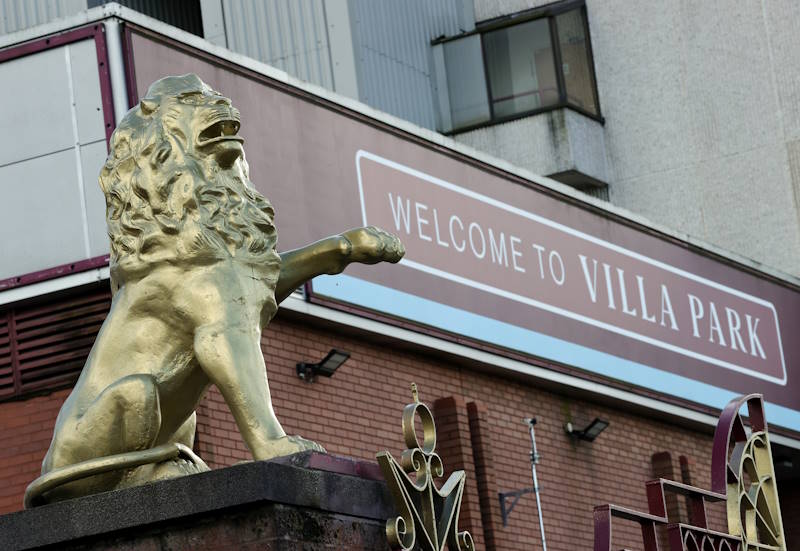
André Savastano
Brazil's top flight, the Brasileirão, has in its past been racked by disputes off the pitch, fights on it, confederation interference, champions going unrecognised, teams that should have been relegated getting a second chance, and clubs being promoted directly from the third to the first division. There are several reasons why the Brasileirão turned into a league with no credibility, and only now, almost 40 years after its creation, have Brazilian fans started gaining confidence in their domestic competition. But even so, is it indeed enough?
Like all Latin people, Brazilians are used to passion, are interested in displays of strong emotion, and since the CBF (the Brazilian FA) adopted a European style league system, fans have seen less interesting seasons and clubs less excited by the chance of becoming champions. Apparently, some Brazilian sides, when reaching the Libertadores da América qualifying spots, are no longer worried about winning and seek only to avoid defeat. Clearly of more interest is the chance to play in the most prestigious continental competition, giving up the struggle for a national title in the process.
The Brazilian league was created in 1971 and lasted until a new European style model was adopted in 2003. From 1971 running through to 2003, 16 clubs lifted the title – the CBF considers that there were 17 winners, but this is a contentious issue surrounding the awarding of a title in 1987 to Flamengo – which is proportionally a greater number than that of many major European leagues. Simply put, the previous Brazilian league was extremely competitive. Now however, in the six years since 2003, there have been just four champions, with São Paulo bagging the title three times. Critics point to this as evidence that the league is in fact becoming predictable.
Moreover, the greatest Brazilian players are overseas, playing in England, Spain, Italy and Germany, mostly. This is not due to the current league model of course and has more to do with financial concerns, but without the playoff system of the former league, players who can be real difference makers with the drive and hunger to do so will be rarely seen. The type that asks for the ball in the 90th minute of a drawn game and scores the championship winning goal is becoming more and more unusual. This is the real star Brazilians want to see and not a collection of talented but work-shy Ronaldinho clones.
As a result of the reduced number of champions, the Brazilian league has lost the surprise factor that fans were used to. In the era of the playoffs supporters could regularly watch a small team challenging for the title (in Brazil, these sides are called zebras). In addition, teams that were not amongst the favourites were often crowned as champions, sides such as Bahia, Guarani, Coritiba and Atlético-PR. Not to mention the fact that clubs without a truly national following were finalists too, sides like Bangu and São Caetano that enjoyed relatively little support and were hitherto known only in their respective states.
There is no denying that the league model practised by Europe and adopted in Brazil rewards the more consistent team with the best campaign throughout the year. The team with the best management and the most investment, paying their players on pay-day (something unusual in Brazil) and offering large bonuses for positive results tend to pick up the trophies. But in this they have more in common with a company than a football club. If fans seek a more stable team, it is safer to follow the largest 'companies'. However, as fans in Brazil appreciate, football is made of emotion, surprises and goals in the fourth minute of added time, and not from the predictability that comes about through competent management.
The Brasileirão itself has become very predictable. Teams fight and perform only until they reach the Libertadores da América qualifying places (the top four), and then seek to keep what they have got.
There are also clubs who simply care about not being relegated and this is a relatively new thing in Brazilian football. Teams only started taking relegation seriously from the time the CBF relegated Botafogo and Palmeiras, in 2002. Before that, there were cases of clubs that should have dropped down to the second division only for the CBF to change the statute for the next year’s championship, leaving these sides in the first division.
Furthermore, since the European model was brought in, half of the teams in the top flight have nothing much to aim at. They stay safe from relegation, but far adrift of the top four. These clubs should fight for a minor South American Cup spot, the continent's equivalent of UEFA's Europa League, but the overwhelming feeling is that this competition is not profitable, so why bother?
It is true that Brazilian football has gained credibility since the European league model was adopted, but there are few teams capable of filling their stadiums and even the league leaders do not attract capacity crowds. The average attendance has increased, that should be noted, but also to be noted is that it is driven by those that historically already have a greater number of supporters.
Today in the Brazilian top flight small teams don’t stand a chance, and if the world still wants to see Brazil as the football country, without an English style predictability, an Italian style defensive mindset and an Spanish style duopoly, there must be changes in the model of the domestic competition. Otherwise, Brazil will be just one more footballing nation amongst many, and not the place where dreams are made.
Related Articles:
- – Roberto Carlos MK II: Dani Alves or Maicon?
- – Scolari Chelsea Failure a South American Problem?
- – Muricy Ramalho: King of the Pragmatists












